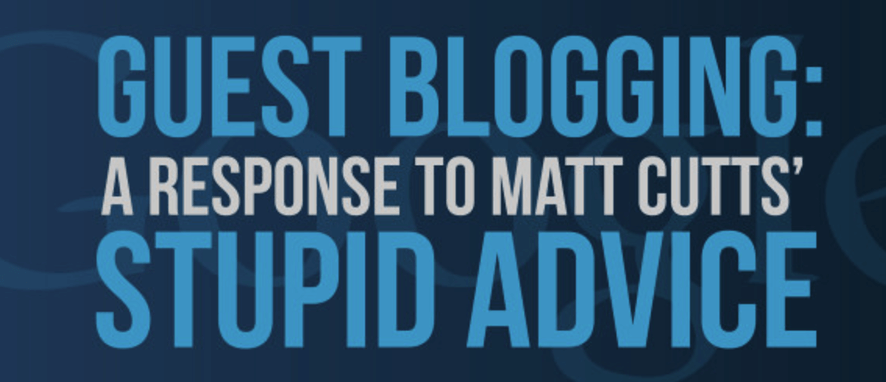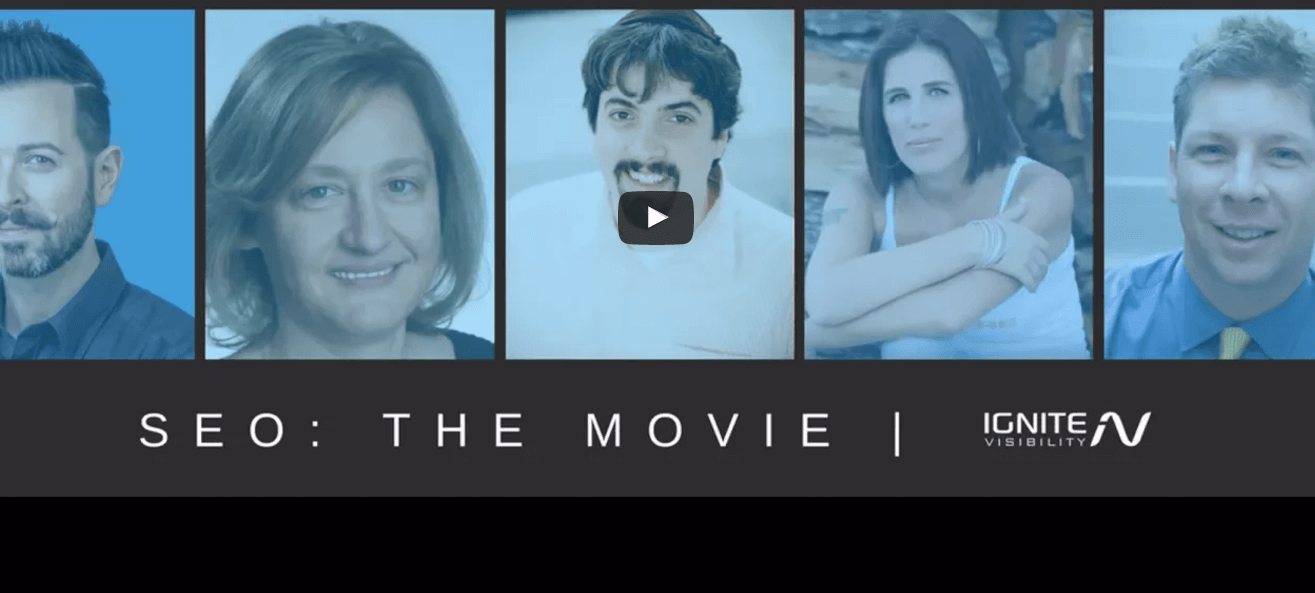
How CRO Makes SEO More Effective (Despite the Rumors)
SEO has joined Content and CRO to help make ecommerce a safer place for the consumer. In this article, we explain how.
This is a story about “SEO conversion optimization” or “SEO-CRO.” That’s a mash-up term for a concept critical to ecommerce success.
Let’s start with a question: Have you heard that search engine optimization is dead?
Some ecommerce managers say it is.
They point to the Google crack-down on spam and the resultant algorithm changes as proof. Websites over-optimized for SEO were buried on page 200+ or removed from search results altogether.
“SEO isn’t just dead,” some say, “it’s not safe.” Many believe conversion rate optimization and SEO should be as far removed from one another as possible.
Those critics are like the upset mouse in “Who moved my cheese?” They’re missing a fundamental factor.
SEO didn’t go away completely; you just find it in a different place now.
If you’re looking for a way to place higher in organic (non-paid) searches, we’re going to point you towards the relocated cheese stash.
This is the key to a right understanding of the SEO impact on CRO. The two are intricately related.
Black Hats and Disappearing Websites – SEO At Its Worst
SEO was the secret, special power required to master ecommerce in the early days of ecommerce. Until Pandas and Penguins were enlisted to clean up Main Street (circa 2011), an intimate knowledge of shady tricks for manipulating search engine results (aka ‘Black Hat SEO’) was the de facto requirement for success.
Then, the bottom fell out.
One by one, penalties were dispensed by Google like lollipops at a dentist’s office. A toothache can get fixed, though. For many ecommerce sites, the only way to get listed on the first page of the SERP (search engine results page) after the war on black hat SEO began, was to secure a new domain name and start all over again.
The years of fear and madness reached a peak in March of 2014, when the (then) chief SEO whip-bearer at Google, Matt Cutts, announced his team had “[taken] action on a spammy link network” owned by the darling of SEO, Ann Smarty.
Guest bloggers rushed to Ann’s defense immediately – enough was enough. Cutts and Google were now attacking guest blogging, a perfectly legitimate SEO tactic.
Google had gone too far.

The aftermath saw Cutt’s departure from his seat of power and rang in a season of reasonableness for Google and ecommerce managers alike. The bad guys heard the message loud and clear. Times had changed.
Now, it was time to move on.
Nobody liked the real spammers anyway. But when you start cutting the legs out from under legitimate businesses, someone has to cry “Foul!”
We bring up all of that to get to this: SEO got a bad rap from those years of madness. Many ecommerce businesses got burned so badly they gave up on digital marketing altogether.
Others backed as far away from SEO as they possibly could – not wanting to end up joining Ann Smarty as a Google scapegoat. It’s no wonder many ecommerce managers are afraid of SEO.
We don’t advocate SEO either – not the way SEO used to be done. Developments in search engine technology caught on to the old ways (thankfully).
Google didn’t just move the cheese, though – Google hid the cheese right in front of our eyes.
Let’s go find it.
Resources:
- Don’t Be Evil – The trailer for a documentary about Google and SEO
- SEO: The Movie – An excellent presentation on SEO history
- How To Do SEO the Human Way – SEO conversion rate best practices
SEO Comes of Age
Around the same time Google began unmercifully going after the bad guys who were scamming their way into search results, a buzz word began to circulate in the digital marketing world: Content Marketing.
Talk around the tables began to refer to “inbound” versus “outbound” marketing and “pull” versus “push.” These weren’t new ideas, of course, but that’s the way of progress. Old concepts sometimes lie dormant until their value is discovered (or rediscovered) and emphasised at the right time.
The hullabaloo over the importance of valuable, consumable content perfectly coincided with Google’s burgeoning ability to identify crappy content and penalize the site hosting it.
The concept doesn’t sound earthshaking, but ecommerce managers who take the message to heart and make it an essential part of their content strategy will invariably reap rich returns: To be effective, your content must engage your audience and inspire actions – reading, clicking, sharing, commenting, promoting, and the like.
SEO, no longer the wanton outlaw it once was, cleaned up its act (albeit reluctantly), then wooed and wed the glamorous, yet unflinchingly practical lady, Content.
But that’s not the end of the story.
Really, it’s the beginning.
The union of SEO and Content gave us the most powerful tool in the marketing tool chest: Conversion Rate Optimization.
The union of SEO and Content gave us the most powerful tool in the marketing tool chest: Conversion Rate Optimization. Share on XHere’s the gist of the story in three points:
- Content without traffic (SEO) is worthless
- Traffic (SEO) without Content is worthless
- Conversion Rate Optimization (CRO) activates SEO and Content to create value
Once you align all three members of the ROI family – SEO, Content, and CRO – you’ve positioned yourself for the best of the best.
This is the ticket to the party, the ride to the ball, and the new ‘big secret.’ It’s how you can make sure your business gets found online, serves up the right content to the right visitors, and converts prospects into paying customers.
Resources:
- 6 Simple Steps for Making the CRO Case to the Boss
- Conversion Rate Optimization Essentials: The Master Guide
- Winning Big in 2017 – 3 Critical Trends in Conversion Optimization

How Your Ecommerce Site Can Leverage the SEO, Content, CRO Trifecta
SEO and content have become virtually inseparable. Whether you’re talking about the technical side of SEO (metadata, page load speed, and such) or the public-facing side (keywords and engagement), content is integral.
You can’t focus on just one; you need all three.
We’re going to give you five primary reasons why we’re so adamant about that conclusion. Once you grasp the depth of the connection, you’ll get excited about the potential of SEO conversion optimization as the pivot point of your marketing strategy.
Let’s go.
1. People turn to search engines to answer questions:
- Where can I buy a good pair of hiking boots?
- What should I look for when buying hiking boots?
- Is it okay to hike the Pacific Crest trail wearing athletic shoes instead of boots?
Black hat SEO would simply have made sure to use those (and a zillion other variations) on the landing page. Today’s SEO must provide content that BEST answers the questions. If you can do that, Google will love you.
NOTE: By answering the right questions, you attract the right prospects. That is a primary aim of CRO.
2. Google is in the business of making sure their search engine provides the best results. That’s why they continue to wage war against underhanded attempts to manipulate search results. Play by Google’s rules, and you’re fine. Cross them, and you’re doomed. Your aim is to HONESTLY provide the best answer to the searcher’s questions. To do that, you have to know what those questions are and which ones relate to your business.
NOTE: When you use tactics that trick people to visit your site, you may get more traffic, but you’ll also lose goodwill. To keep your conversion rate high, seek clarity and avoid confusion. Here’s a word you’ll want to know and study: personalization.
3. Keywords are essential. Those who say keywords don’t count anymore are missing the big picture. They believe Google’s algorithms no longer rely on the words, focusing instead on the context and ‘semantic search.’ We don’t discount the importance of context and searcher intent, but experience tells us keywords are still important.
Let’s face it, if your ecommerce site sells ski jackets, you should talk about ski jackets, ski apparel, how to dress for snowboarding, and a long list of other terms. Your content should focus on your business. Use the words that describe what you do. And, by the way – run your own search on “ski jackets.” Every first-page result on the SERP prominently uses that term.
NOTE: CRO best practices demand that you use the words prospects use to talk about your goods and services – not trade words. Good keyword research is nothing more than finding out what those words/terms are and how popular they are with your prospective audience.

4. Keep your content focused, helpful, and clickable. The longer visitors spend on the page, and the more they interact with the material, the better the search engines like it. Look for ways to encourage those signals.
Notice the RESOURCES links we provided in this SEO/Conversion Optimization guide. Those are for your benefit, but they also help us. When you click on those links, then come back to keep reading, that shows Google we are providing helpful information that deserves to rank for the kinds of search that led you here.
NOTE: CRO is all about giving prospects the tools and information they need. Pleased prospects soon become happy customers.
5. The end goal of effective SEO and CRO is the same: they both aim to help searchers get to where they want to go. Your content creates the path for that to happen. Google rewards you (higher organic placement on the SERP) for helping them help searchers find what they’re looking for.
NOTE: There’s that trifecta again: SEO, Content, and CRO work together to keep you, Google, and searchers happy.
SEO, Conversion Optimization, Content – Your Three Best Friends
Those are just five best-practice proofs to support our premise. SEO didn’t die, but it did change. You won’t find it hanging out in seedy places anymore. SEO joined Content and CRO to help make ecommerce a safer place for the consumer.
By acknowledging the depth of that connection in both your marketing strategy and your marketing budget, you’ll be taking the most effective route to showing a favorable return on investment for your efforts.
Got questions? Let’s talk about it. Leave a comment or get in touch!

About the Author
Jon MacDonald
Jon MacDonald is founder and President of The Good, a digital experience optimization firm that has achieved results for some of the largest companies including Adobe, Nike, Xerox, Verizon, Intel and more. Jon regularly contributes to publications like Entrepreneur and Inc.
